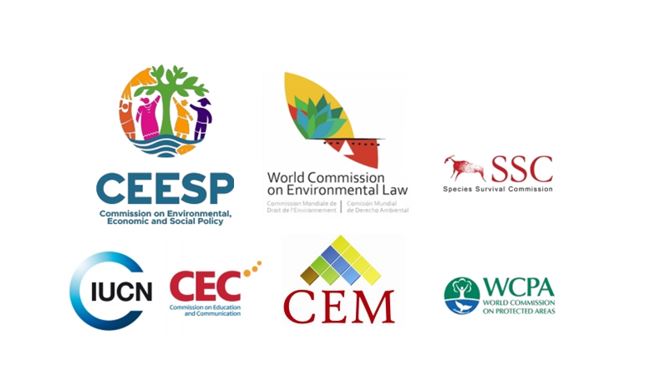Joint Statement by IUCN Commissions
WG II contribution to the Sixth Assessment Report of the IPCC

Photo: IUCN
The new UN Intergovernmental Panel on Climate Change (IPCC) report1 synthesizes the latest science on the impacts on and vulnerability of natural and socio-economic systems to climate change, and challenges and options for adaptation.
A key message from the IPCC report is that “Any further delay in concerted anticipatory global action on adaptation and mitigation will miss a brief and rapidly closing window of opportunity to secure a liveable and sustainable future for all.” All approaches are needed, including “safeguarding biodiversity and ecosystems” and protecting “approximately 30% to 50% of the Earth’s land, freshwater and ocean areas, including near-natural ecosystems.”
Human-induced climate change and extreme weather events have substantially damaged ecosystems, and led to increases in the risk of extinction of more than 10,000 species, including the extinct Bramble Cay melomys. Such events simultaneously result in serious implications for human well-being by impacting on food and water security , and higher incidence of associated diseases.
The Paris Agreement target of pursuing efforts to limit average global temperature increase to 1.5°C above pre-industrial levels recognized that this would significantly reduce the risks and impacts of climate change. A key pathway to attaining that target requires enhancing ecosystem resilience through the protection of remaining intact ecosystems—especially carbon-rich ecosystems such as peatlands, seagrass beds, mangroves and primary forests— and the restoration of lost and damaged terrestrial, freshwater, coastal and marine ecosystems.
There is strong scientific evidence to suggest that effective and equitable conservation of at least 30% of the Earth’s land, freshwater and ocean areas is critical to strengthening the resilience of biodiversity and supporting ecosystem integrity at a global scale. This can maintain benefits for people, including livelihoods, human health and well-being. The resulting ecosystem services contribute to disaster risk reduction, climate change adaptation and mitigation.
Thirty-seven percent of all remaining natural lands on the planet are occupied by Indigenous peoples. These lands store about 13% of all carbon retained in terrestrial ecosystems and make up 40% of the total area that is formally protected. 2-4 In 2021, the IUCN World Conservation Congress at Marseille called on “all components of IUCN to prioritize support for the full and effective participation of Indigenous peoples in the implementation of all protection, conservation and restoration activities … with appropriate recognition of the rights of Indigenous peoples to their lands, territories and resources, as set out under the United Nations Declaration on the Rights of Indigenous Peoples (UNDRIP)” (Resolution 101).
The IPCC report acknowledges and recognizes the need to safeguard biodiversity and ecosystems as being fundamental to climate-resilient development. This is in alignment with the need to protect and conserve natural ecosystems as expressed in Target 3 of the Draft Global Biodiversity Framework, which calls on all Parties to the Convention on Biological Diversity to conserve at least 30% of the planet with effective and equitable protected and conserved areas.
We must not miss the narrowing window of opportunity to stop and reverse biodiversity loss trends. We underscore the urgent need to take effective and concerted action addressing drivers of biodiversity loss, and build lasting partnerships, to secure intact natural ecosystems, restore degraded ecosystems and prevent further loss and degradation. These actions will not only contribute to climate mitigation but also build resilience and improve human well-being, especially among those communities most vulnerable to climate change.
References
1. Pörtner, H.-O. et al. WGII Contribution to the IPCC Sixth Assessment Report (AR6), Climate change 2022: Impacts, Adaptation and Vulnerability: Summary for Policymakers. (Switzerland, 2022).
2. Garnett, S. T. et al. A spatial overview of the global importance of Indigenous lands for conservation. Nature Sustainability 1, 369, doi:https://doi.org/10.1038/s41893- 018-0100-6 (2018).
3. Dinerstein, E. et al. A Global Deal For Nature: Guiding principles, milestones, and targets. Science Advances 5, doi:https://doi.org/10.1126/sciadv.aaw2869 (2019).
4. Diaz, S. et al. Summary for policymakers of the global assessment report on biodiversity and ecosystem services of the Intergovernmental Science-Policy Platform on Biodiversity and Ecosystem Services. (Bonn, Germany, 2019)



